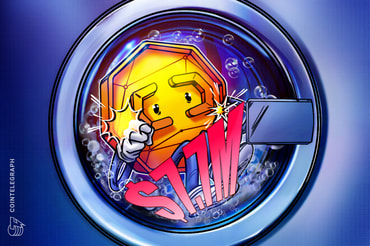Hugging Face releases a 3D-printed robotic arm: Can it make AI-driven robotics more accessible?

The AI development platform Hugging Face has introduced the SO-101, an enhanced version of their 3D-printable robotic arm that combines affordability with advanced features. Developed in collaboration with partners like The Robot Studio, this device makes AI-driven robotics more accessible to enthusiasts, educators, and researchers. Here’s what we know so far.
The SO-101 builds upon Hugging Face’s previous SO-100 robotic arm with significant design and functionality improvements. It features six motors at its core and can interact with multiple cameras to perform tasks through the use of reinforcement learning. The system typically consists of a leader arm and a follower arm, each equipped with six motors for intuitive teleoperation control.
The SO-101 seamlessly integrates with Hugging Face’s LeRobot library, a PyTorch-based toolkit for developing robotic AI. Users can capture datasets through teleoperation by controlling the follower arm with the leader arm. The system allows users to train neural networks to replicate these captured movements and deploy trained models for autonomous operation. A clear workflow in the GitHub repository guides users through device calibration, data collection, reinforcement learning training, and outcome assessment. All datasets and models can be shared on the Hugging Face hub, fostering community collaboration.
One impressive capability is the arm’s ability to learn specific tasks — for example, it can learn to place a Lego brick into a container after a single demonstration. According to Hugging Face, the arm can master such tasks within minutes using standard consumer computers.
The robotic arm’s design features camera-based visual sensing for object recognition and manipulation, compatibility with the open-source LeRobot framework, real-time leader-follower arm synchronisation for human-guided learning, and integration with LeKiwi — aRaspberry Pi-powered mobile base for full autonomy.
The SO-101 improves upon its predecessor with several key enhancements: a redesigned wiring system that eliminates disconnection issues at joint three and improves mobility, optimised gear ratios in the leader arm that remove the need for external gearboxes, streamlined assembly that doesn’t require gear removal, and improved motors that reduce friction while supporting the arm’s weight.
For power specifications, the standard Arm Kit Edition runs on 5v power supplies for both arms, while the Pro Edition uses 5v for the Leader Arm and 12v for the Follower Arm. This careful power management ensures optimal performance across all movements.
The SO-101’s most revolutionary aspect is its price point. The basic model starts at about $100, with fully equipped and pre-assembled versions ranging up to $500, depending on the supplier and import costs. This represents a dramatic cost reduction compared to traditional industrial robotic arms, which often cost thousands.
For those preferring to buy rather than build, Seeed Studio is taking pre-orders for the SO-101 motor kit at $220 (reduced from $240), with optional 3D-printed structural components for an additional $35.
The educational and accessible robotic arm market has expanded rapidly, with several established competitors offering solutions for classrooms, research labs, and hobbyists. The Niryo Ned2, Dobot Magician, and uArm Swift Pro each have distinct advantages. The Niryo Ned2, a 6-axis arm designed for precision and industrial simulation, offers ±0.5mm repeatability and an aluminium frame. However, its $4,000+ price tag limits accessibility for many schools and makers, making it primarily suitable for advanced educational or research settings.
The Dobot Magician, priced around $1,700, is popular in STEM education. It features various end-effectors for 3D printing and laser engraving, plus gesture and voice control support. While it offers a polished, plug-and-play experience, its proprietary software and limited AI integration capabilities restrict the customisation of machine learning projects. The uArm Swift Pro, priced at just under $1,000, offers high repeatability and payload capacity, but focuses more on precision tasks than open-source AI experimentation.
The Hugging Face SO-101 distinguishes itself through its unique blend of affordability, open-source design, and native AI integration. While competitors emphasise mechanical precision or include accessories, the SO-101 prioritises experimentation with machine learning and reinforcement learning. Its integration with the Hugging Face LeRobot library and hub-sharing capabilities promotes collaborative robotics development. This makes it particularly attractive for those exploring robotics and artificial intelligence without a large initial investment.
The SO-101’s affordability does involve trade-offs: its 3D-printed construction and unspecified repeatability may not match premium arms’ industrial-grade precision or durability. However, for educators, students, and researchers focused on rapid prototyping and experimentation, the SO-101 offers an accessible alternative that addresses a crucial market gap.
The SO-101 serves diverse applications across multiple domains:
This versatility makes the SO-101 particularly valuable for those seeking to develop foundational skills in AI-enhanced robotics without significant financial investment.
The Hugging Face SO-101 represents a significant advance in democratising advanced robotics technology. By combining affordability, open-source architecture, and robust AI tool integration, it creates new opportunities in education, research, and innovation within the field of robotics.
For makers, students, researchers, and hobbyists exploring the intersection of AI and physical computing, the SO-101 provides an unprecedented entry point into a field that traditionally demanded substantial resources and specialised expertise. The thorough documentation, active community support, and continuous improvements suggest this platform will become increasingly capable and user-friendly.

Published on Other News Site



















